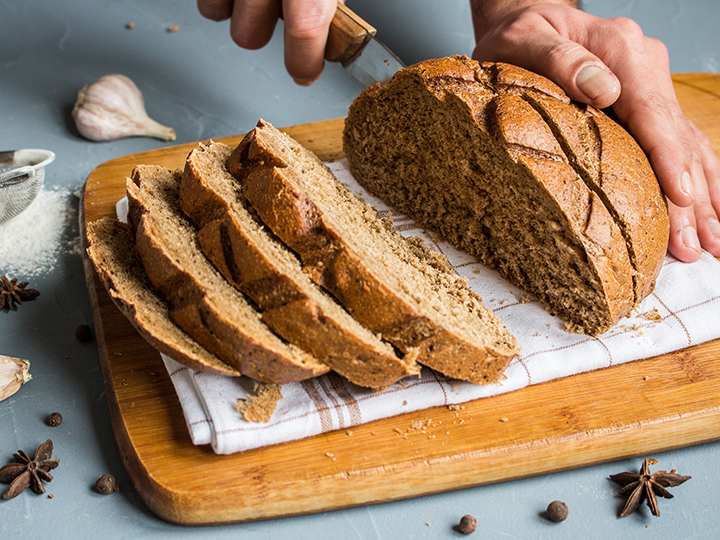
Making sourdough bread is a process that has been around for centuries, and it is gaining popularity again in recent years. Sourdough bread is known for its unique flavor and texture, and it is made without the use of commercial yeast. Instead, it is leavened using a natural sourdough starter, which is a mixture of flour and water that has been fermented over several days. In this article, we will go over the step-by-step process of making sourdough bread at home.
Step 1: Make a Sourdough Starter
The first step in making sourdough bread is to make a sourdough starter. This is a mixture of flour and water that has been fermented by wild yeasts and bacteria present in the air. To make a starter, mix equal parts of flour and water in a bowl and cover it with a cloth or plastic wrap. Leave it at room temperature for 24 hours, then discard half of the mixture and feed it with equal parts of fresh flour and water. Repeat this process for 5-7 days, until the starter becomes active and bubbly.
Step 2: Mix the Dough
Once you have an active sourdough starter, it's time to mix the dough. In a large mixing bowl, combine flour, salt, and your sourdough starter. Add water gradually, and mix until the dough comes together. You may need to adjust the amount of water depending on the consistency of your starter and the type of flour you are using.
Step 3: Knead the Dough
Once your dough is mixed, it's time to knead it. Kneading helps to develop the gluten in the dough, which gives it its elasticity and structure. Turn your dough out onto a floured surface and knead it for 10-15 minutes, until it becomes smooth and elastic. Alternatively, you can use a stand mixer with a dough hook attachment to knead your dough.
Step 4: Proof the Dough
After kneading, the dough needs to be proofed. This is the process of allowing the dough to rise and develop flavor. Place your dough in a lightly oiled bowl, cover it with a cloth, and leave it at room temperature for several hours. The exact time will depend on the temperature of your kitchen and the strength of your sourdough starter. Generally, it takes 4-6 hours for the dough to double in size.
Step 5: Shape the Dough
Once your dough has proofed, it's time to shape it. Turn it out onto a floured surface and gently deflate it. Shape it into a round or oblong loaf, and place it in a lightly floured basket or bowl to proof for a second time. This process is known as the final proof and usually takes 1-2 hours.
Step 6: Bake the Bread
After the final proof, it's time to bake your sourdough bread. Preheat your oven to 450 degrees F and place a baking stone or Dutch oven in the oven to heat up. Gently transfer your dough onto the baking stone or into the Dutch oven, and slash the top with a sharp knife or razor blade. This allows the bread to expand as it bakes. Bake for 30-40 minutes, until the crust is golden brown and the internal temperature of the bread reaches 200-210 degrees F.
Step 7: Cool and Enjoy
After baking, remove your sourdough bread from the oven and let it cool on a wire rack. It's important to let it cool completely before slicing to allow the crumb to set. Once it's cooled, slice and enjoy with butter, jam, or your favorite toppings.
In conclusion, making sourdough bread is a process that equires time and patience, but the results are worth it. The natural sourdough starter gives the bread a unique flavor and texture that cannot be replicated with commercial yeast. With practice and experimentation, you can create your own variations of sourdough bread by adding ingredients like seeds, nuts, or herbs.
Tips for Success:
- Use a kitchen scale to measure your ingredients accurately.
- Use high-quality flour, preferably unbleached and organic.
- Use lukewarm water to activate the yeast and gluten in the flour.
- Experiment with different types of flour, such as whole wheat or rye, to create different flavors and textures.
- Maintain your sourdough starter by feeding it regularly and storing it in the refrigerator between uses.
- Be patient with the proofing process, as it can take longer in cooler temperatures or with weaker sourdough starters.
- Slash the top of the bread before baking to allow for proper expansion.
- Use a baking stone or Dutch oven to create a crusty, artisan-style bread.
In conclusion, making sourdough bread is a rewarding and satisfying process that can be enjoyed by anyone with a little bit of time and patience. By following these steps and tips, you can create your own delicious loaves of sourdough bread that are sure to impress your friends and family. So go ahead and give it a try, and discover the joys of homemade bread-making!